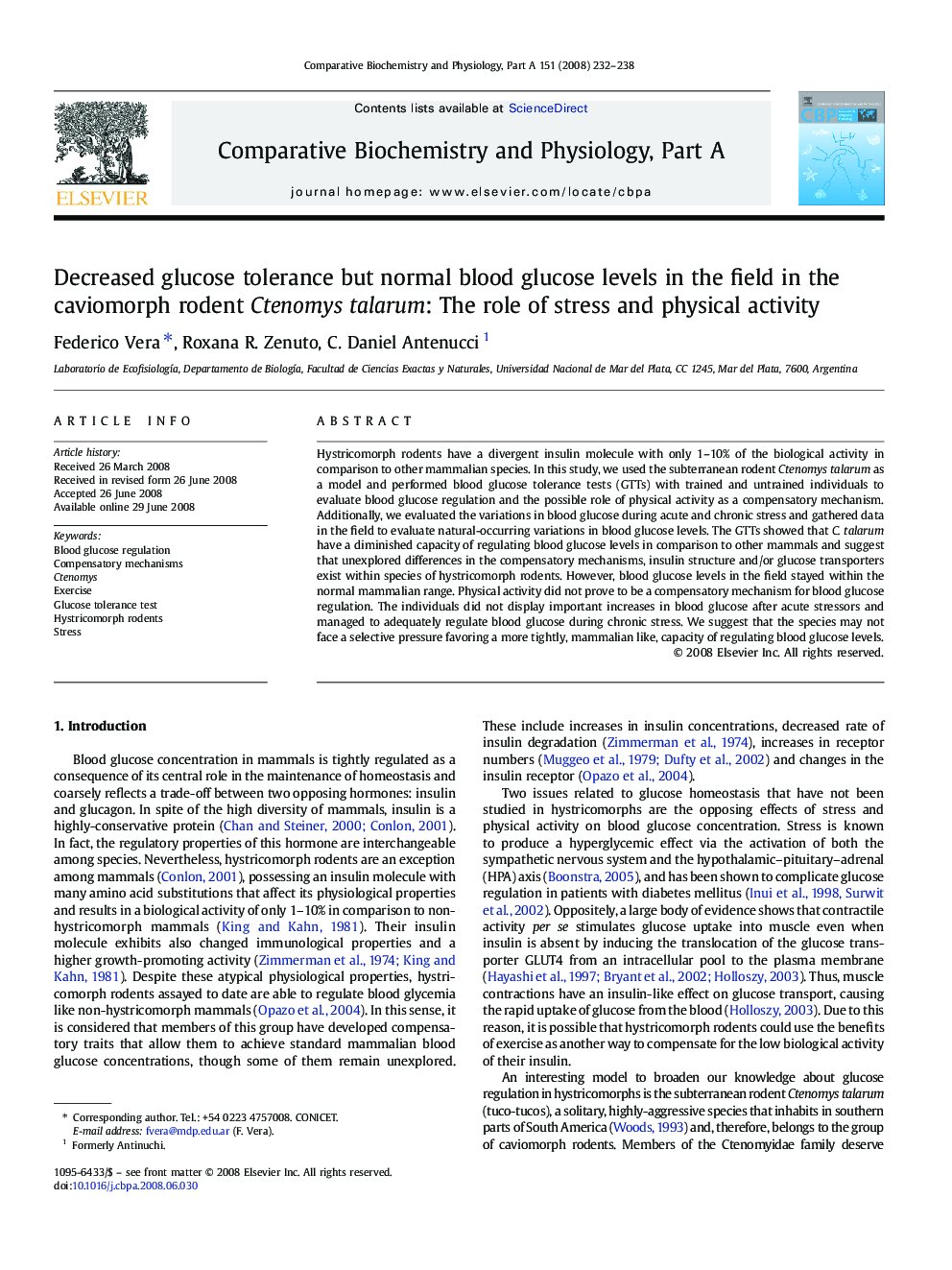| کد مقاله | کد نشریه | سال انتشار | مقاله انگلیسی | نسخه تمام متن |
|---|---|---|---|---|
| 1973829 | 1060328 | 2008 | 7 صفحه PDF | دانلود رایگان |

Hystricomorph rodents have a divergent insulin molecule with only 1–10% of the biological activity in comparison to other mammalian species. In this study, we used the subterranean rodent Ctenomys talarum as a model and performed blood glucose tolerance tests (GTTs) with trained and untrained individuals to evaluate blood glucose regulation and the possible role of physical activity as a compensatory mechanism. Additionally, we evaluated the variations in blood glucose during acute and chronic stress and gathered data in the field to evaluate natural-occurring variations in blood glucose levels. The GTTs showed that C. talarum have a diminished capacity of regulating blood glucose levels in comparison to other mammals and suggest that unexplored differences in the compensatory mechanisms, insulin structure and/or glucose transporters exist within species of hystricomorph rodents. However, blood glucose levels in the field stayed within the normal mammalian range. Physical activity did not prove to be a compensatory mechanism for blood glucose regulation. The individuals did not display important increases in blood glucose after acute stressors and managed to adequately regulate blood glucose during chronic stress. We suggest that the species may not face a selective pressure favoring a more tightly, mammalian like, capacity of regulating blood glucose levels.
Journal: Comparative Biochemistry and Physiology Part A: Molecular & Integrative Physiology - Volume 151, Issue 2, October 2008, Pages 232–238